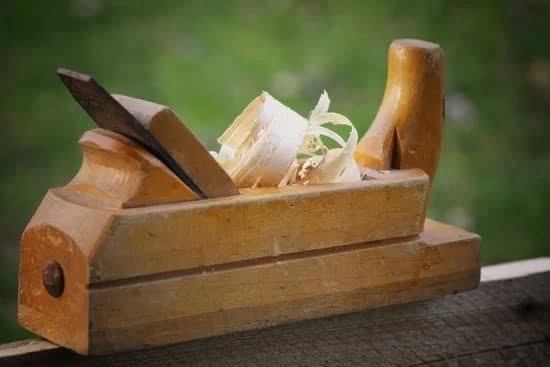Ants coming out of woodwork is a common issue faced by many homeowners, causing frustration and concern. These tiny insects seem to appear out of nowhere, creating a nuisance in our living spaces. Understanding the phenomenon of ants emerging from woodwork is essential in effectively managing and preventing infestations.
Woodwork provides an ideal environment for ants to thrive due to its porous nature, providing easy access for these pests to build nests and forage for food. Some common types of ants that are often found in woodwork include carpenter ants, odorous house ants, and pavement ants. Each species has unique behaviors and preferences when it comes to nesting and feeding habits.
There are various factors that can attract ants to infest woodwork, including moisture, food sources, shelter, and even previous infestations. It is crucial to be vigilant and proactive in identifying signs of ant infestations in woodwork to prevent further damage and potential health risks.
In the following sections, we will delve into the causes of ant infestations, signs to look out for, potential damage they can cause, prevention tips, DIY methods for eradication, as well as knowing when it’s time to seek professional pest control services for help.
Common Types of Ants That Are Often Found in Woodwork
When it comes to ants infesting woodwork, there are several common types of ants that are often found causing trouble. One of the most prevalent species is the carpenter ants. Carpenter ants are attracted to moist or decaying wood, making them a common sight in wooden structures.
These ants do not actually eat wood but excavate it to create nests and tunnels, which can lead to structural damage over time. Another type commonly found in woodwork is odorous house ants. These ants emit a foul smell when crushed and typically nest near moist areas such as leaky pipes or within damaged wood.
While carpenter ants and odorous house ants are frequently encountered in woodwork, other types of ants may also make their presence known. Pavement ants, for example, are small brown or black ants that often build nests under cracks in concrete or stone, making their way into homes through gaps in windows or doors. Additionally, pharaoh ants are tiny yellowish-brown ants that prefer warm and humid environments, nesting in wall voids or behind baseboards.
Ant infestations in woodwork can be triggered by various factors, with one of the main causes being the presence of food sources nearby. If crumbs, spills, or other food remnants are accessible to ants within a home or building structure, they will be more likely to establish colonies within the woodwork. Additionally, moisture issues such as water leaks or high humidity levels can attract certain ant species like carpenter ants that thrive in damp environments.
| Ant Species | Common Characteristics |
|---|---|
| Carpenter Ants | Excavate wood to create nests; attracted to moist or decaying wood |
| Odorous House Ants | Nest near moist areas; emit foul smell when crushed |
| Pavement Ants | Build nests under concrete; enter buildings through cracks |
Causes of Ants Infesting Woodwork
Introduction to Ant Infestation in Woodwork
Ants infesting woodwork can be a frustrating and unsightly problem for homeowners. These tiny pests can quickly multiply and cause damage to wooden structures if not addressed promptly. Understanding the causes of ants infesting woodwork is crucial in effectively combating this issue.
Availability of Food Sources
One of the primary reasons why ants are attracted to woodwork is the availability of food sources. Wood can provide an ideal environment for ants to find sustenance, whether it be through feeding on decaying wood or other insects that have made their home within the wooden structures. If there are crumbs or spills near the woodwork, it can further attract ants looking for food.
Moisture Levels
Another significant factor that can lead to ants infesting woodwork is high moisture levels. Damp or rotting wood is particularly appealing to certain types of ants, as they prefer nesting in moist environments. Leaky pipes, poorly sealed windows, or any other source of water damage near the woodwork can create a welcoming habitat for these pests. It’s essential to address any moisture issues promptly to deter ant infestations.
Signs to Look Out for to Identify an Ant Infestation in Woodwork
Ants infesting woodwork can be a pesky and frustrating problem to deal with. To effectively address this issue, it is crucial to be able to identify the signs of an ant infestation in woodwork. By being observant and recognizing these signs early on, you can take proactive measures to eliminate the problem before it worsens.
Here are some common signs to look out for when trying to identify an ant infestation in woodwork:
- Presence of Ant Trails: One of the most obvious signs of an ant infestation in woodwork is the presence of ant trails. These are visible lines of ants moving back and forth along a specific path, often leading to their nest or food source.
- Sawdust Piles: If you notice small piles of sawdust near wooden structures or furniture, it could indicate the presence of carpenter ants. These ants excavate galleries within wood, leaving behind sawdust as they tunnel through.
- Wood Damage: Another telltale sign of an ant infestation in woodwork is visible damage to wooden surfaces. This can include hollowed-out sections, crumbling wood, or even audible sounds of ants chewing on the wood.
If you notice any of these signs in your woodwork, it is important to take immediate action to address the ant infestation. Ignoring the problem can lead to further damage and potentially more extensive infestations throughout your home. By being vigilant and proactive, you can effectively combat ants coming out of woodwork before they become a more significant issue.
Potential Damage Caused by Ants in Woodwork
Ants coming out of woodwork can cause significant damage if left unchecked. Different types of ants can infest woodwork, such as carpenter ants, odorous house ants, and pavement ants. These pests can chew through wood, creating galleries and tunnels to build their nests. As they tunnel through the wood, they weaken its structure, leading to potential structural issues in your home.
To better understand the potential damage caused by ants in woodwork, consider the following points:
- Structural Integrity: When ants infest and hollow out wooden structures like beams, doors, or furniture, it compromises their integrity and strength. This can pose safety hazards for inhabitants and may require costly repairs.
- Moisture Damage: Ants attracted to moisture sources within woodwork can exacerbate existing moisture-related issues. Their presence can lead to rotting of wood and mold growth, further deteriorating the structure.
- Electrical Risks: Carpenter ants are notorious for nesting in damp or decaying wood but may also nest near electrical wires. This increases the risk of short circuits, potentially causing fires.
To prevent extensive damage from ants in woodwork, it is crucial to take immediate action when signs of infestation are noticed. Regular inspections for early detection and implementing preventive measures can help protect your property from the destructive consequences of these tiny invaders.
Tips for Preventing Ants From Coming Out of Woodwork
Ants are social insects that often establish colonies in wooden structures, leading to the phenomenon of “ants coming out of woodwork.” To prevent this issue, there are several proactive measures you can take. One effective tip is to seal off any cracks or crevices in the woodwork where ants could potentially enter. This can be done using silicone caulk or another suitable sealant to block their entry points.
Another essential tip for preventing ants from infesting your woodwork is to keep your living space clean and free of food debris. Ants are attracted to crumbs, spills, and open food sources, so maintaining a tidy environment can help deter them from establishing colonies in your wooden structures. Additionally, storing food in airtight containers and promptly cleaning up any spills can make your home less appealing to ants.
Furthermore, consider using natural ant repellents like peppermint oil, vinegar, or lemon juice around your woodwork. These natural ingredients have properties that ants find unpleasant, which can discourage them from exploring or nesting in your wooden surfaces. By incorporating these preventive measures into your regular household maintenance routine, you can significantly reduce the likelihood of ants coming out of the woodwork in your home.
| Preventive Measure | Description |
|---|---|
| Seal Cracks and Crevices | Use silicone caulk to seal off potential entry points for ants in woodwork. |
| Maintain Cleanliness | Keep living spaces clean and free of food debris to make the environment less attractive to ants. |
| Use Natural Repellents | Employ natural ant repellents like peppermint oil or vinegar to deter ants from infesting woodwork. |
DIY Methods for Getting Rid of Ants in Woodwork
Ants can be a persistent nuisance when they start coming out of the woodwork in our homes. These tiny insects can infest and damage wooden structures if not dealt with promptly. While calling professional pest control services is an option, there are also several do-it-yourself (DIY) methods that can help in getting rid of ants in woodwork effectively.
Identify the Entry Points
One of the first steps in addressing an ant infestation in woodwork is to identify their entry points. Ants can enter through cracks, crevices, or gaps in wooden structures, so sealing these entry points with caulk or silicone can prevent more ants from coming out of the woodwork.
Natural Repellents
Using natural repellents like lemon juice, vinegar, peppermint oil, or cinnamon can deter ants from infesting woodwork. These substances disrupt their scent trails and make the area less appealing for ants to explore. Simply spraying or placing these natural repellents along ant trails or entry points can help repel them effectively.
Boric Acid Baits
Boric acid baits are another DIY method that can be used to eliminate ant colonies within woodwork. Mixing boric acid with sugar or honey as bait attracts ants to consume it, which eventually leads to the destruction of the colony. However, caution must be taken when using boric acid baits around pets and children as it can be harmful if ingested.
By employing these DIY methods effectively, homeowners can effectively address the issue of ants coming out of the woodwork and prevent further damage to wooden structures in their homes. Remember that persistence is key when dealing with ant infestations, so regular monitoring and maintenance may be necessary to keep them at bay.
When to Call a Professional Pest Control Service for Help
While dealing with ants coming out of woodwork can often be managed with DIY methods, there are instances where the infestation may be too severe or persistent for homeowners to handle on their own. In such cases, it is important to know when it is time to call a professional pest control service for help.
One key factor to consider is the scale of the infestation. If you notice a large number of ants continuously emerging from your woodwork despite trying various methods to eliminate them, it may be a sign that the problem requires professional intervention. Pest control experts have the knowledge and experience to identify the extent of the infestation and determine the most effective treatment plan.
Another reason to seek professional help is if you have tried DIY methods without success or if you are uncomfortable using chemical treatments on your own. Professional pest control services have access to more advanced products and equipment that can effectively eliminate ants from your woodwork while ensuring the safety of your home and family. Additionally, they can provide ongoing prevention strategies to stop future infestations before they become a major problem.
Conclusion
Ants coming out of woodwork can be a nuisance and potentially damaging issue that homeowners need to address promptly. Ignoring the signs of an ant infestation in your woodwork can lead to further damage and an increase in the number of ants infiltrating your living space. By understanding the common types of ants found in woodwork, recognizing the signs of an infestation, and taking preventive measures, you can effectively control and eliminate these unwanted pests.
Taking proactive steps to prevent ants from infesting your woodwork is crucial in maintaining the integrity of your home or property. Regularly inspecting wooden structures for any signs of ants, sealing cracks and crevices where they can enter, keeping food sealed and stored properly, and maintaining cleanliness are simple yet effective ways to deter ants from making their way into your woodwork.
It is essential to address any ant-related issues as soon as they are discovered to prevent further damage and potential health risks associated with these pests.
In cases where DIY methods prove ineffective or the infestation is extensive, seeking professional pest control services may be necessary. Pest control experts have the knowledge, skills, and tools to effectively eliminate ants from woodwork and prevent future infestations.
Remember, addressing ants in woodwork promptly is key to protecting your property and ensuring a safe environment for you and your family. So if you notice any signs of ants coming out of woodwork, take action immediately to prevent the situation from worsening.
Frequently Asked Questions
Why Are Ants Coming From My Baseboards?
Ants coming from baseboards could indicate a nearby colony establishing a food source within your home. Crumbs, spills, or improperly sealed food can attract them, leading to them trailing along baseboards.
Why Do I Suddenly Have Carpenter Ants?
Sudden appearance of carpenter ants may signal a larger issue like damp or decaying wood attracting them for nesting purposes. Identifying and fixing moisture problems is crucial to deter these destructive pests.
What Are the Little Ants in Woodwork?
Little ants in woodwork might be odorous house ants seeking sweet or greasy food sources indoors. Their small size allows them to navigate through tiny cracks and gaps in search of sustenance, often congregating around kitchens and pantries.

Hi everyone! I’m a woodworker and blogger, and this is my woodworking blog. In my blog, I share tips and tricks for woodworkers of all skill levels, as well as project ideas that you can try yourself.





